Some ideas take time to arrive. In 1966, Jensen’s FF was the first performance car to use four-wheel drive, but it wasn’t until Audi, Porsche and Lancia put their heads down almost two decades later that the industry’s purveyors of speed began to take two driven axles seriously. It’s been a similar story with everything from turbos to stop-start technology.
Now could be the turn of hybrid power – specifically, a plugless blend of petrol and electricity. When Toyota introduced the world’s first mass-made hybrid car in 1997, it’s unlikely they imagined that 23 years and a hitherto non-existent vehicle class would be needed to force the technology into the mainstream. The engineering for the Toyota Prius was so complicated that it took seven weeks to get the original prototype moving – and then only for a few hundred metres. Two years later, however, the car was in the hands of the public and returning roughly double the fuel economy of a contemporary Toyota Corolla. At that moment, and reasonably, everybody involved must have believed there would be no looking back.
But how many hybrid cars have you owned? Quite likely none, although it seems absurd to argue that hybrid technology isn’t yet mainstream. More than six million examples of the Prius alone have been sold since 1997, and today some variation of hybrid power is offered by almost every major car maker, from Suzuki to Ferrari.
The broader sales figures tell a different story, of course, which is that widespread adoption has been slow. Last year, fewer than one in 10 cars sold in Britain used any form of electric assistance at all. And while billboards nationwide are currently saturated with adverts for ‘self-charging’ cars, this is more to do with an industry now desperate to sell the technology and avoid CO2-related fines than it is with building on any pre-existing appetite.

Which brings us to Longcross Proving Ground in Surrey and four mid-sized petrol-electric SUVs. Japanese ones, specifically, hence the angry creases and unexpected curves crammed within a footprint marginally shorter (but wider) than that of the latest BMW 3 Series.
We’ve assembled this quartet to acknowledge the fact that in the wake of Dieselgate, hybrid may soon overtake the diesel as the default powertrain in this wildly popular class. And given it is a class in which diesel has until now dominated, that really would represent a watershed moment. You might say that hybrid technology had properly arrived. What we’re therefore aiming to discover is threefold: which offers the best all-round package, how does each stack up in terms of ownership costs and does any pass muster as a truly convincing family car?
Our contenders are from Toyota, Subaru, Lexus and Honda, although it’s not an exhaustive cast. Mitsubishi builds a plug-in hybrid Outlander and Nissan will finally hybridise the smaller Qashqai for the next generation, which is due next year. The Europeans have been notably behind the curve. Citroën only recently launched a plug-in hybrid C5 Aircross and Peugeot will introduce the 5008 PHEV later this year, and the premium brands have also taken their time – not that an Audi Q5 hybrid or an electrified Porsche Macan would ever need to compete with Subaru and co in terms of cost. Ultimately, for those who want to buy now at a reasonable price, the cars before you are your core post-diesel options.
Going in chronological order, you’d never guess the Lexus NX, seen here in F Sport guise and therefore fitted with firmer suspension, is by far the oldest of our quartet, at six years of age. The origami design means it’s still the most outwardly desirable (or polarising), but at £42,500 perhaps it should be. That asking price means it costs roughly £4000 more than either the Subaru and Honda and £5000 more than the Toyota. Put another way, for the same outlay you could put our top-spec Toyota RAV4 on your drive with enough spare change for 42,000 miles of unleaded, according to the 48mpg WLTP economy figure, which is easily the best of our group.

In truth, price is the least of the Lexus’s problems. The NX has always been a compromised car, not least because its low-speed ride often feels brittle enough to undermine the coupé-like snugness of the cabin ambience. The once advanced but now limp-feeling powertrain – a 2.5-litre Atkinson-cycle petrol engine operating in tandem with an electric motor via a CVT, with an additional and entirely separate electric motor driving the rear wheels – also at times exemplifies the dissonance we’ve come to dislike about hybrid technology. That is an engine speed bearing no relation whatsoever to what’s happening down at road level as crankshaft revolutions are kept at optimal efficiency while the CVT modulates wheel speed. I’ll accept that enthusiasts feel this more keenly than most, and the average NX owner will rarely use more than half-throttle – the point after which the undesirable effects become most noticeable – but an engine conspicuously straining at high revs hardly whispers ‘premium’.
In this company it gets worse for the poor old Lexus, although the deeply bolstered seats are the most comfortable here and the cabin is not only richly upholstered but also solidly built – typical Lexus strong points. Beyond the ageing powertrain, the next issue is space, or lack thereof. As with the Honda and the Toyota, the rear seats recline, but the boot is the smallest and it has the highest lip. In terms of capacity, its 475 litres play 497 for the Honda, 520 for the Subaru and a deep but shallow 580 litres for the Toyota. Factor in the least intuitive infotainment system in an already weak field and mediocre fuel economy (more on which shortly), and the Lexus seems a true case of style over substance. Today’s prospective hybrid crossover shopper might even sample the NX and conclude that, on the basis of its most attractive and expensive member, nothing else in this niche class would be worth consideration.
But it takes only minutes behind the wheel of the CR-V Hybrid to appreciate how big a mistake that would be. The fifth generation of the world’s best-selling crossover is the first of its line to feature a hybrid powertrain, and the car feels made for it. Compared with the arrangement in the Lexus, Honda’s 2.0-litre VTEC petrol engine is less directly involved, being positioned upstream of an 181bhp electric drive motor and tasked chiefly with feeding the car’s generator motor, which in turn charges a small lithium ion battery. It sounds like a complicated solution but the result is a surprisingly natural driving experience reinforced by the calming ambience of an airy cabin.
Honda uses a single-speed gearbox so you get a good dose of EV-style responsiveness at low speeds, much of the time without any combustion activity at all. Ask for extra power and the system remains mild-mannered, resisting any intrusive engine flare-ups better than any other car here. At higher speeds a lock-up clutch then allows the engine to drive the wheels directly, but again this feels decently natural, and at all times you can use the paddle shifters to usefully vary the level of regenerative braking.
Overall, it’s the normality of the CR-V that makes it such a strong proposition. You don’t notice its objective flaws because, beyond the awful touchscreen display, it has so few. Inside, there isn’t the expansive dash or the serious, perched-up driving position recognisable from larger SUVs (the RAV4 offers both), but perceived quality is high, the ergonomics are generous given the neat footprint and rolling refinement is excellent. Were you to conduct a test with blindfolded passengers chauffeured in the CR-V then afterwards in, say, an Audi A4, they would struggle to tell the difference.

The Forester strikes a different tone. It’s a typically rugged, full-time four-wheel-drive Subaru effort denied arguably its most natural powertrain pairing since the brand dropped its 2.0-litre diesel boxer engine two years ago. What we have instead is the most tentative – but also the most lightweight – hybrid application in this group, with a 16bhp electric motor working alongside a naturally aspirated flat-four 148bhp petrol. But despite the welcome electric torque injection for initial throttle response, this is a slow car, and if the turbocharged Forester STI of yore was an email fired from here to there in an instant, its hybrid successor is a written letter delivered by bicycle. A quick drag race proves as much, the RAV4 edging out the CR-V with reasonable ease, with the Lexus a car length or two behind the Honda by 60mph and the straining Subaru way off the pace. The ‘e-Boxer’ Forester is also the least able to glide about in EV mode at low speeds and remains prone to over-revving.
However, it fights back with a surprisingly well-appointed cabin, acres of space inside and an appealing dose of good old-fashioned utility. Because of its smaller battery, how that battery is positioned and how the CVT has been redeveloped, its braked-trailer towing capacity of 1870kg easily betters that of the Toyota (1650kg), the Lexus (1500kg) and the Honda, whose 750kg potential will immediately take it out of the running for some. Admittedly, these hybrids still fail to match most diesel alternatives, but the Subaru is closest and is also the most natural off-roader, with the greatest ground clearance among the assembled and well-calibrated off-road ESP modes, although the Toyota also impresses in this respect.
And it is the Toyota that, in the eyes of Autocar readers, does most for the hybrid crossover cause, at least initially. The brutish design brings some of the toughness owners in the US currently associate with the brand thanks to models such as the Tacoma pick-up. The interior sports the sort of authentic details found in cars designed to be driven wearing work gloves – rubber-rimmed rotary dials for the ventilation, chunky toggle switches for the seat heaters – and there’s a generous array of electrical ports. The boot floor can also be flipped over for a wipe-down plastic surface, and yet, barring the occasional hard plastic panel, overall the cabin feels solidly put together for the asking price.
Under the skin, the latest RAV4 is also much improved. Its new platform is said to be half as stiff again as the old hardware, and it has increased ground clearance but a lower centre of gravity. Architecturally, the powertrain is recognisable as that from its Lexus corporate cousin, although crucially it’s a more recent iteration and uses a nickel-metal hydride battery for better cold-weather performance. With more than 220bhp when both electric motors and the 2.5-litre engine work together, the RAV4 can also feel startlingly quick, and as with other cars that use this latest Toyota hybrid set-up (notably the Corolla), there’s a much more linear nature to the power delivery. It’s a much more complete product than the previous generation.

But it simply isn’t as complete as the Honda. The engine grunts coarsely when cold and, while the Honda’s VTEC can slip in and out of operation with barely a ripple at times, the RAV4’s larger unit is far keener to make itself known. Conversely, the Toyota’s body floats less at speed, it has more intuitive brakes for easier car park manoeuvring and on balance is probably the more interesting steer. Its ride lacks the CR-V’s polish, though, and road imperfections more faithfully bubble up through the seats and steering, but not to the same extent that they do in the Lexus.
However, in this class so much comes down to the cost of ownership, so it’s important to note that both the Toyota RAV4 and the Honda CR-V are available in front-wheel-drive forms. In their entry-level trims, which are still decently equipped, that drops both cars to a shade over £30,000, making the pair not only comfortably the better all-rounders in this test but also potentially the most affordable. For now the RAV4 also gets extra points for its 131g/km WLTP CO2 rating, which is an exceptional figure for such a sizeable beast and makes it the standout option if you intend to run one of these as a company car.
As for fuel economy, during an impromptu test – 15 miles in convoy around the outer track at Longcross, travelling between 30mph and 70mph – and in partial contradiction to the official figures, the Honda comes out on top, recording a strong 51.9mpg despite leading our train of cars and paying a small aerodynamic penalty for the privilege. The Toyota comes second with 46.5mpg, and the Forester and NX perform poorly, struggling to get close to 40mpg despite all cars starting the test with batteries half full. The difference between the haves and have-nots could hardly be any starker.
So, as far as hybrids go, progress has been made, as long as you look in the right places. The Lexus rightly feels outdated and the curious Subaru underdeveloped, but the Toyota and Honda do seem to have turned a corner in terms of real-world economy and simple drivability, and the Honda builds on that with a satisfyingly pliant ride. The CR-V therefore wins, with the spacious and more characterful RAV4 a close second. The only thing that remains is to find out whether either can beat one of the best diesel alternatives in a shootout.
Read Hybrid mega-test part two: Does diesel do it better? to find out.
READ MORE
Hybrid mega-test part 2: Does diesel do it better?
Top 10 best hybrid hatchbacks 2020
MG to bring HS plug-in hybrid to UK in 2020
New Renault Clio hybrid and Captur plug-in hybrid launched





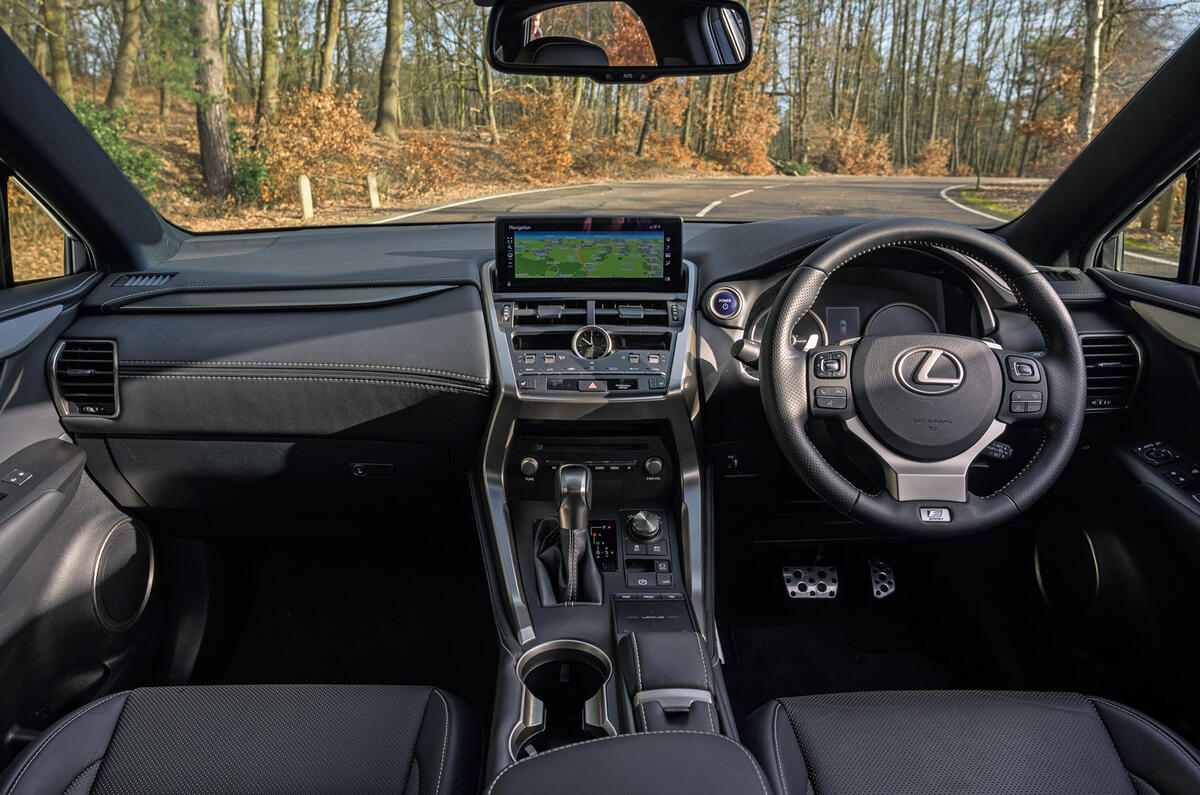
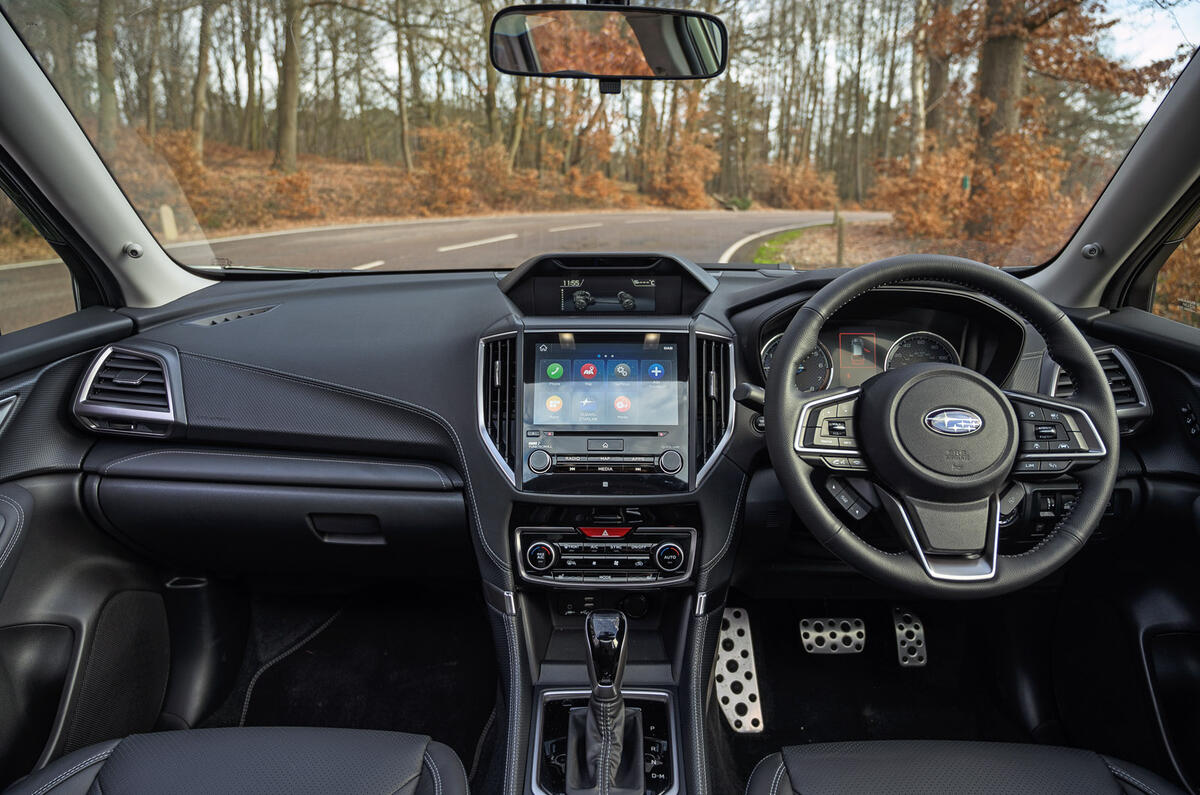

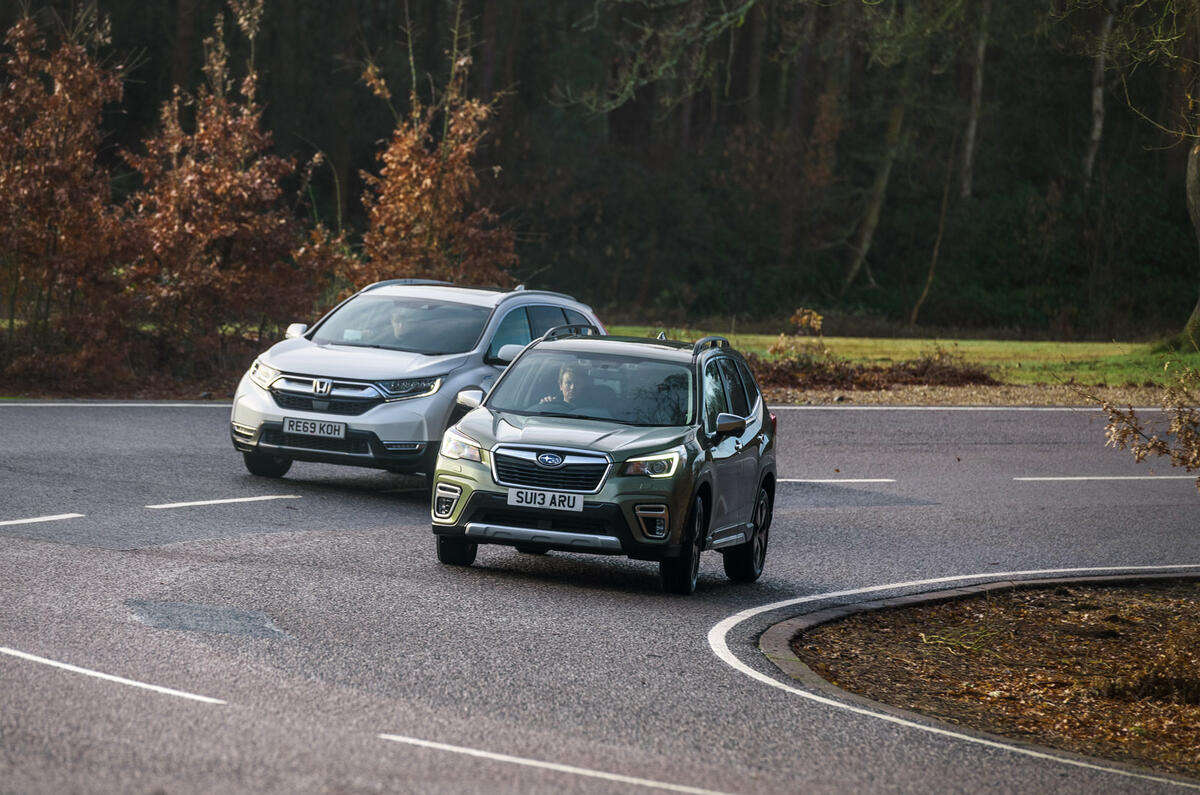
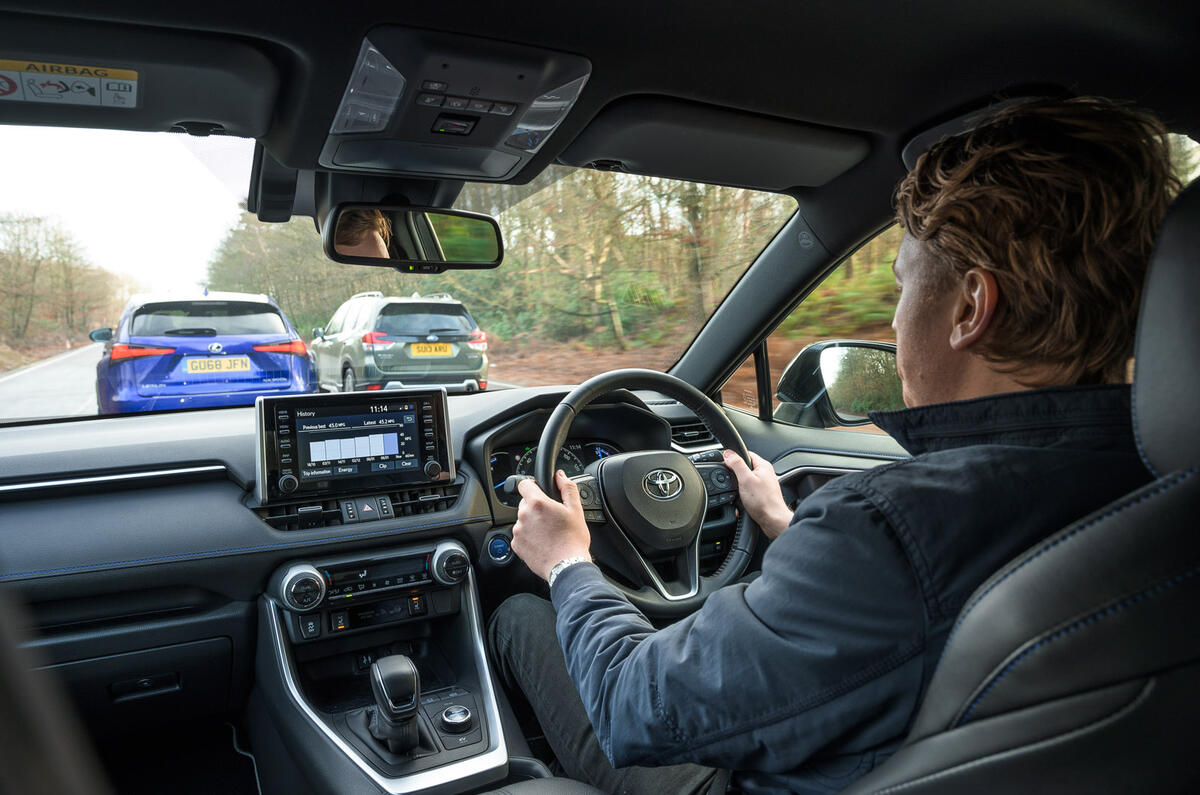

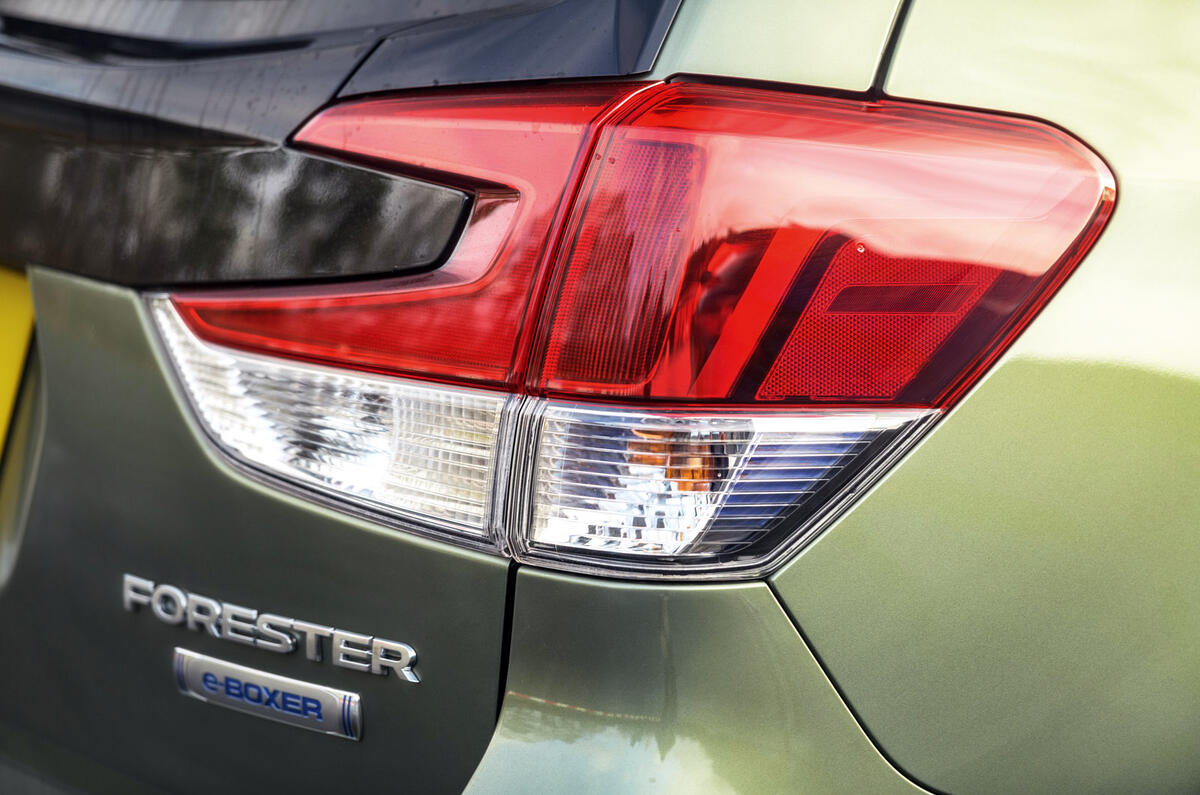
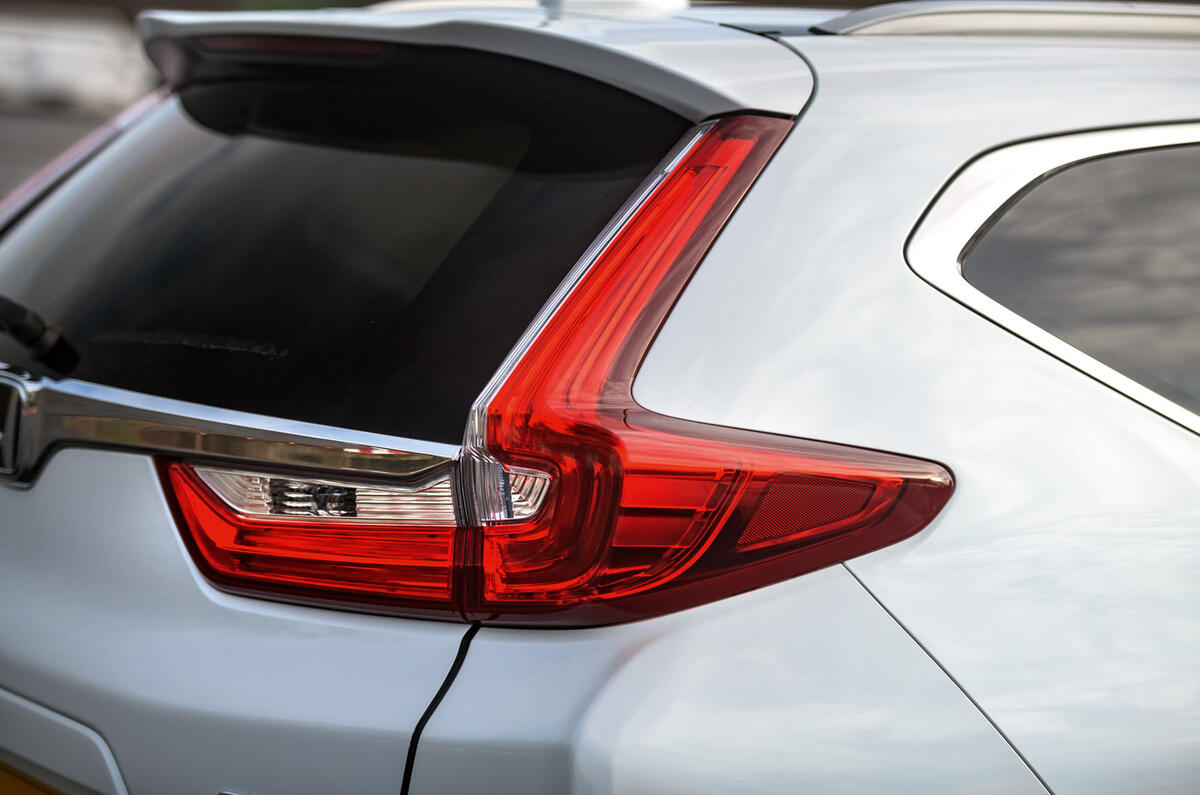
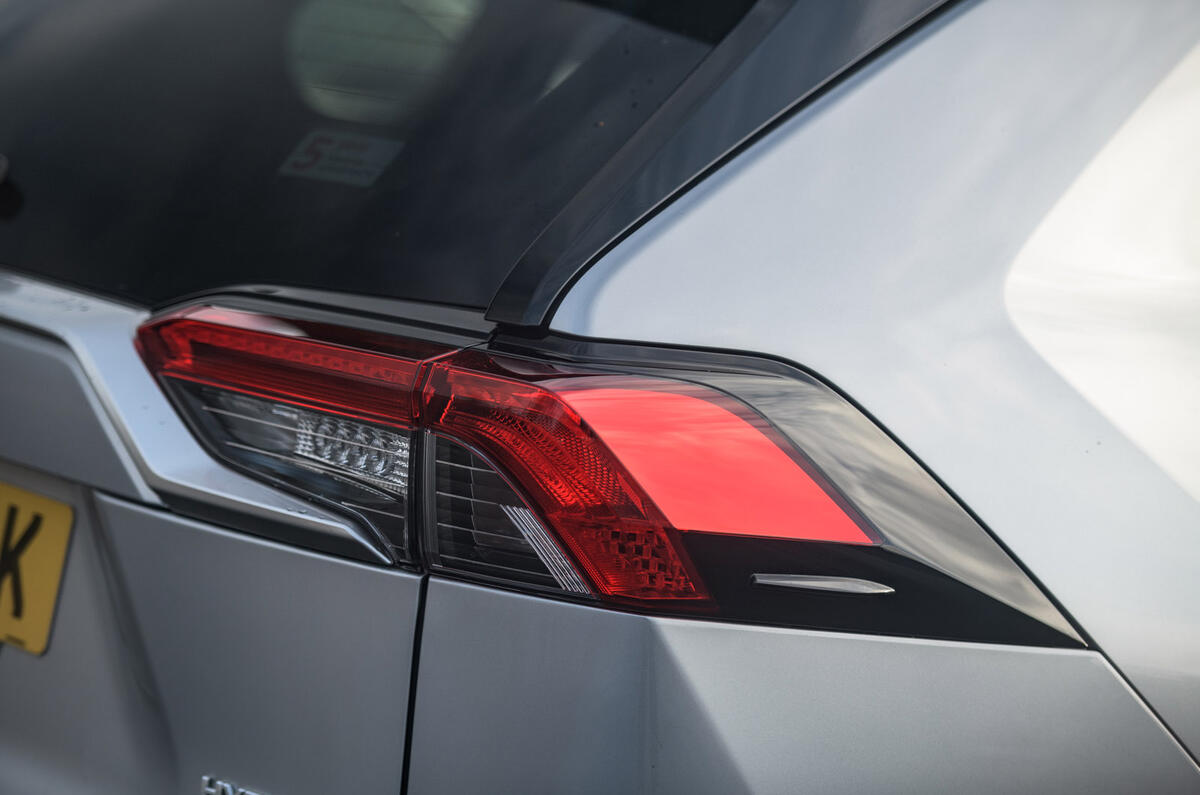
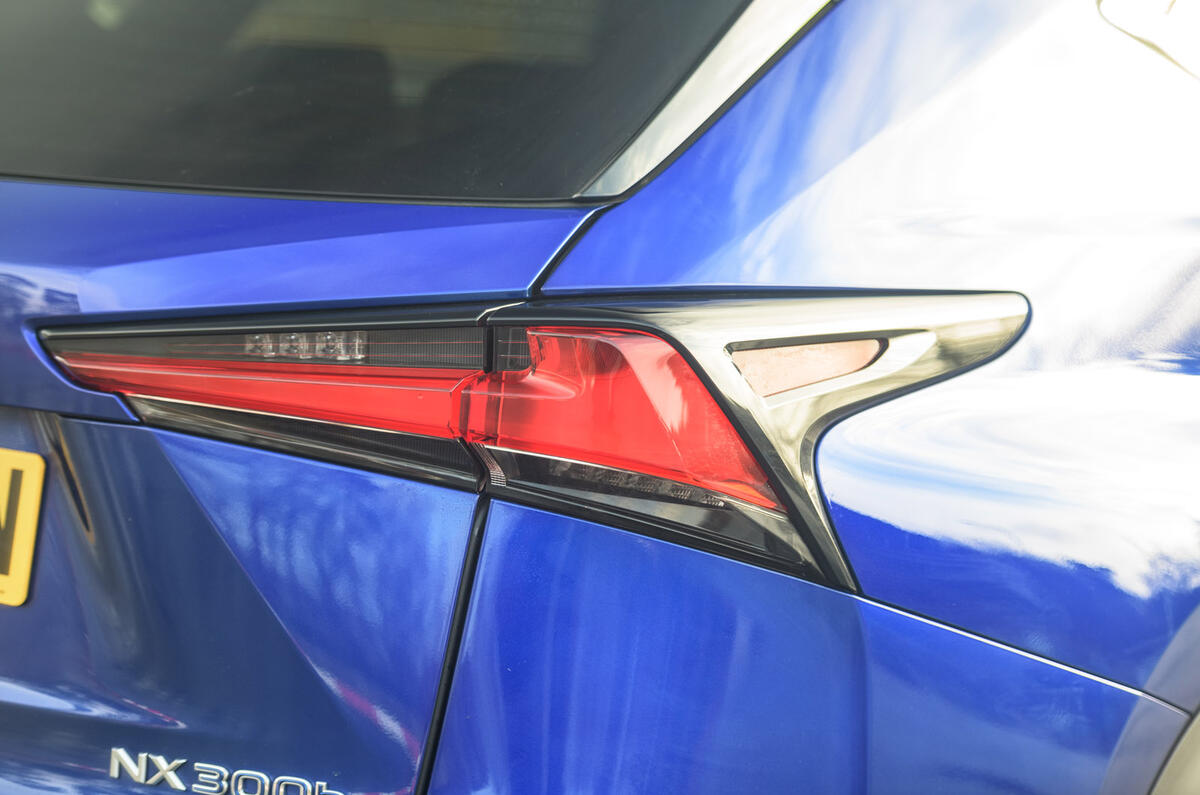

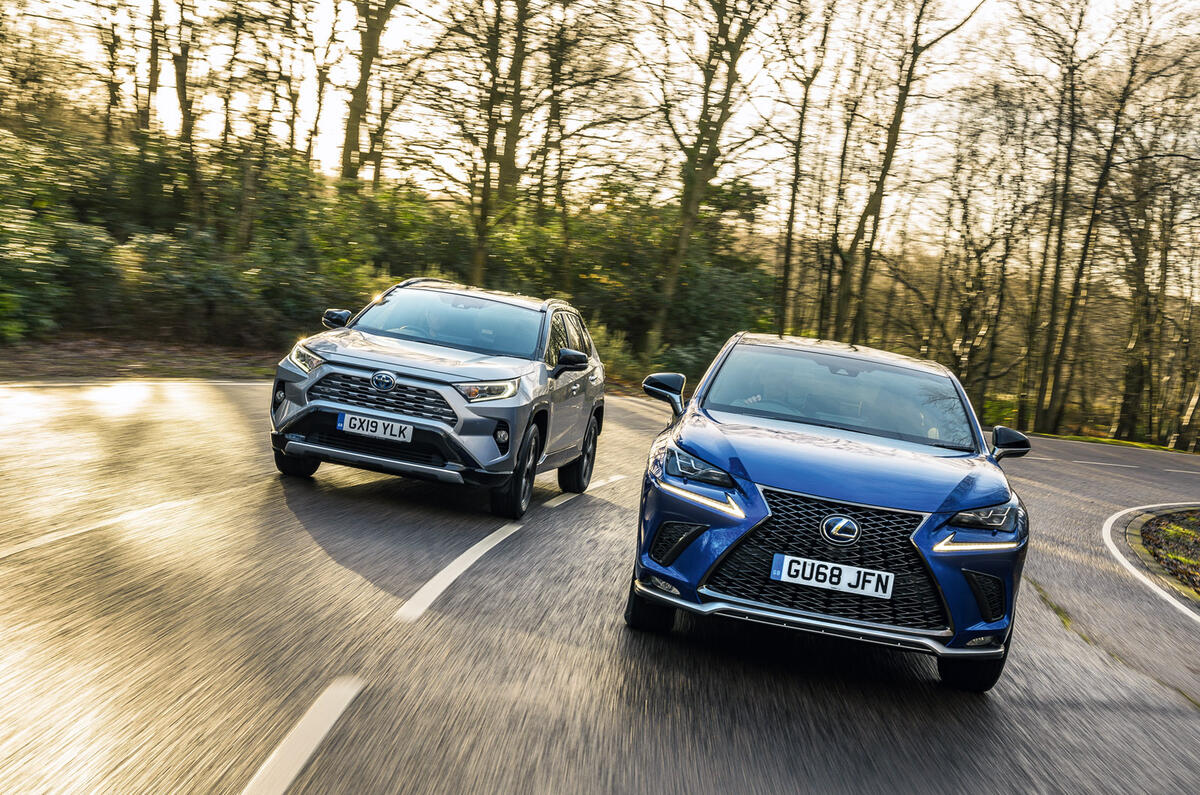










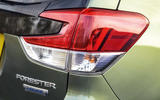
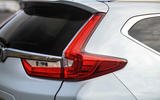
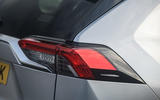









Join the debate
Add your comment
"For now the RAV4 also gets
"For now the RAV4 also gets extra points for its 131g/km WLTP CO2 rating," Actually its only 103 g/km which is far more remarkable and for some nudge it ahead of the Honda with 126g/km as it would mean worthwhile lower company car tax. But generally I agree with all the comments on the reviews. PS would like to see a video of the drag race!
Lexus NX